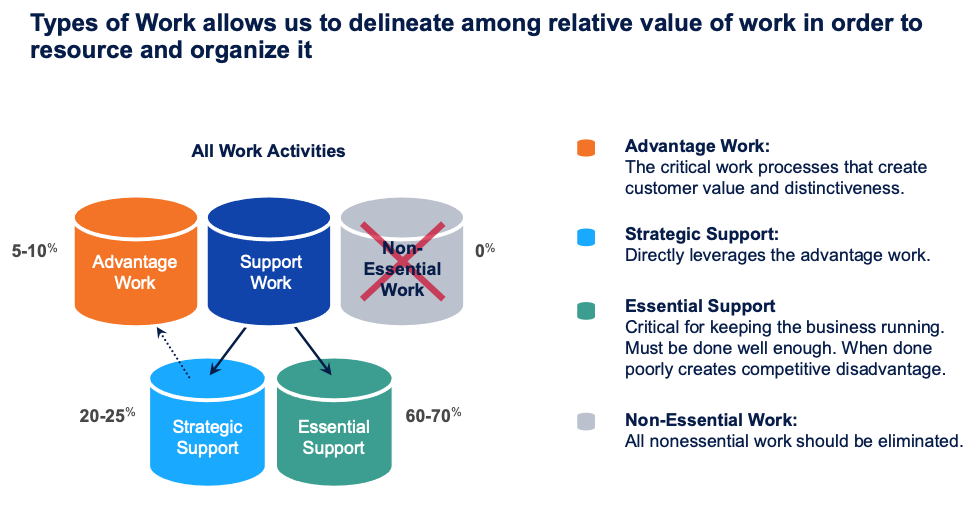HR Transformation: Common Pitfalls and Tried and True Tips
Key Takeaways:
• HR Transformation should transform the whole of HR, instead of just parts of it.
• HR leaders should understand what makes the business distinctive before trying to create structure for HR.
• Invest in developing HR professionals and leaders to enhance strategic work.

HR Transformation: Common Pitfalls and Tried and True Tips

In 2021, RBL reported the findings from the 8th round of our global competency study, co-sponsored with the University of Michigan and led by Patrick Wright, Mike Ulrich and Dave Ulrich. The purpose of this global, thirty-year study was to define what makes an HR professional effective and how HR contributes to business value.
We discovered that individual competency is important but that the highest impact opportunities for HR professionals are to utilize their competencies to embed business capabilities and transform the HR Department. In this post, I’ll give some tips about overcoming pitfalls during HR Transformation. Based on the number of times I hear HR leaders tell me they have attempted HR Transformations several times without sustainable impact, this is an opportune area for improvement.
Here are four common HR Transformation pitfalls and tips to overcome each.
Pitfall 1: Defining HR transformation as improving the parts rather than transforming the whole.
HR transformation requires an architecture that enables HR to examine and improve various elements that impact value. Specific elements can be time-consuming and expensive to implement but approached independently they are not transformational. Common examples include reorganizing the HR operating model, becoming more agile or investing in technology to make HR more digital. Organization redesign, agility and digital technology are all parts of the whole, but while improving them can be very helpful, improving the elements one at a time without an overarching architecture is not HR Transformation.
Tip: HR transformation is about transforming the entire HR Department to create value for the business. Its intent is to create the conditions to do work differently in the future and to reframe the opportunity for HR to have greater impact on the business. There are four elements of HR Transformation and all of them must be defined, improved and integrated to have transformational impact.
Figure 1 shows these elements:

- Business context: This is another way of saying that we must start from the outside in. HR transformation must understand the needs of internal and external stakeholders (employees, leaders, customers, investors, community). Without this understanding, HR is too internally focused.
- Outcomes: HR Transformation should include improving HR’s impact on the business by building business capabilities as well as improving efficiencies in the delivery of essential HR services.
- HR Design: HR organization design must facilitate the desired HR outcomes of efficiency and effectiveness. Efficiencies are created by centralizing, outsourcing and technologically enabling essential services while increasing effectiveness by building business capabilities in leadership, talent and organization.
- HR Accountability is improved by investing in HR professionals and leaders to develop the knowledge, skills and perspectives that enable the transformation.
Pitfall 2: Defining the structure of HR before understanding what makes the business distinctive.
A few years ago, we were invited to give a presentation about our approach to HR Transformation at a global biotech company that was looking for a consulting partner. When we finished our presentation, we immediately received the feedback that we were the only firm that didn’t propose the “Ulrich model” (or a version of it) as the predetermined solution. Since Dave Ulrich is one of the co-founders of RBL, they found this interesting. This was purposeful on our part. Structure does not lead HR transformation. HR structure follows a deep understanding of business strategy and business capabilities required for distinctiveness. Not until this is clear can HR transform.
Tip: To quote Dave Ulrich “HR is not about HR, it’s about the business”. HR transformation requires an understanding of the work that creates value for the business and then designing the organization and building HR leaders and professionals to enable it. To accomplish this, we look at different types of work that deliver different kinds of value:

Using this framework, HR does not do Advantage work. Advantage work is the work the business does that directly impacts customer distinctiveness. By defining the Advantage work, HR can identify and build capability for strategic work. Strategic work directly leverages the Advantage work. With clarity about the Advantage work, HR can identify and deliver about 20% of its’ work as strategic. Without clarity about Advantage work, HR can’t really be very strategic. For example, talent acquisition, training and development, compensation practices and so on are strategic when applied to the advantage work of the business. Identifying and hiring those who do advantage work should be from a different talent pool from those doing essential and strategic work because of the impact that advantage work has on the business.
In addition, HR should organize by separating strategic work and essential work. If strategic and essential are combined in the same role or the same team, the essential work drives out the time (and energy) to do strategic work. This is because the nature of the work is different. Essential work is short term, concrete and urgent while strategic work is long term, ambiguous and conceptual. Human nature is to take care of the essential before the strategic. If the types of work are not separated, it’s virtually impossible to get strategic work done.
Pitfall 3: Not investing in developing HR professionals and leaders.
After 30 years of doing HR Transformations, I’d argue that not developing the HR professionals to do strategic work is the #1 reason HR Transformation fails. If we get everything else right but don’t invest in people to upgrade their skills, the transformation will fail. If we expect people to do strategic work, then we need to invest in providing them with frameworks, tools, and shared language to do this work. This is the classic problem of the cobbler’s barefoot children. HR tends to focus on others before investing in themselves. But for impact on the business, HR must invest in itself.
Tip: We are pleased to provide digital, cohort-based diagnostic assessments, development assessments and academies. We have packaged these into an all-access platform called RBL Omnia.
Pitfall 4: Trying to link HR activities directly to business strategy.
This approach is to review the business strategy and then to create a list of HR initiatives that support the business as “must wins” or “strategic priorities.” These HR lists tend to be generic and usually not very strategic to the business.
Tip: Business capabilities are the link between business strategy and HR activities. HR can identify the cultural and technical capabilities that the business needs to win and for HR to contribute to building these capabilities rather than to the business strategy directly. HR is strategic when it builds these capabilities. Example: If I ask you to think of a company you admire, you might choose Apple, Walmart, Singapore Airlines or BMW. If I then ask you to say why you admire each of these companies, typically I hear:
Apple: Innovation
Walmart: Efficiency/Low prices
Singapore Airlines: Customer Service
BMW: Quality Mindset
HR contributes to building these capabilities by hiring, onboarding, developing, rewarding and retaining specific to the capability required. For example, Singapore Airlines has built capabilities to deliver great customer service. Passengers tend to have a better customer experience on Singapore than on other airlines. The entire customer experience has been carefully orchestrated for customers to perceive a high caring experience from buying a ticket, to waiting in a lounger to flying on the plane. Capabilities are the link between business strategy and HR actions.
Conclusion
HR transformation should not be a frequent project at your organization. When it is required, it’s important to approach it in a manner that sets up HR to create value for the business for several years. HR adds value to the business when its leaders and professionals develop competencies that enhance the performance of the HR department and align with identified business capabilities.
If you’re feeling stuck in your own HR transformation efforts, contact us.

